preview The artist formerly known as Research in Motion has a new smartphone kid on the block; a new top-line unit which many believe will either make or break the company’s fortunes forever. But does the Z10 have what it takes to get the Canadian manufacturer back on its feet? Read on to find out.
Note: This article represents an advanced look at the design, features and likely performance of this product, but we haven’t actually tested or played with it ourselves it yet. A follow-up full review will be published when we have.
Design
The overall design of the Z10 (from photos and video we’ve seen) reminds your writer pretty starkly of the black version of the iPhone 5. You get the same flat black oblong with rounded corners, the same large screen on the front with a front-facing camera and microphone at the top. This is a smartphone which, on the face of it, doesn’t scream ‘BlackBerry’ so much as it screams that it wants to be taken seriously as an iPhone competitor. In addition, the Z10’s main camera appears to be placed at the top left of its back, where the iPhone 5’s camera is placed; unlike most modern Android models, which tend to have the camera in the top centre of the back. The Z10 also comes in white … again, just like the iPhone 5.
Other aspects of the Z10, however, appear to be more drawn from Research in Motion’s (now known as ‘BlackBerry’) past. The back of the Z10 has a rubbery stippled look and feel, and the BlackBerry logo is there in a metallic finish. And it appears as though the Z10’s design will have elements in common with the current generation of Android models as well, with a fairly standard-looking volume rocker on the right-hand side and microUSB and HDMI ports on the left-hand side. The model weighs 135 grams and it measures 130 x 65.6 x 9 mm; quite thin and of about average weight.
Now, of course we haven’t actually played with the Z10 yet. However, on the face of it, we have to say we’re fairly uninspired by the Z10’s overall design. It has neither the new age style of Nokia’s Lumia line or HTC’s Windows Phone series, nor the unique smooth lines which we’ve found in recent Android models from HTC and Samsung.
What the Z10 most looks like is an iPhone 5 impersonator with a few touches of traditional BlackBerry and a few touches from the stock Android world. However, we doubt that its manufacturer has paid the extreme attention to detail and build quality in its design and manufacture that Apple has with the re-worked iPhone 5. With this in mind, we can’t help but suspect the Z10 is lurking in that nebulous in-between land of design; with touches from everywhere but with no real defining style of its own. This may make it fairly comfortable in the hand, but it won’t help it stand out from the crowd.
Features
In terms of its featureset, the Z10 is fairly standard for a late 2012/early 2013 high-end smartphone, with no real standout features to give it an edge over the competition.
Its display is a 4.2″ multi-touch LCD model running at a resolution of 1280×768, which means it features 356 pixels per inch; and yes, that’s in Retina Display territory (like virtually every other manufacturer these days). Its main camera is an industry standard eight megapixel model capable of shooting 1080p HD video, and its front-facing camera is a two megapixel model which can shoot 720p. It comes with 2GB of RAM, 16GB of internal storage (plus a microSD card slot under the back jacket) and support for all the normal Wi-Fi, BlueTooth and NFC options.
Plus, you get micro-USB for synching and charging, micro-HDMI output, support for 4G LTE carrier speeds, and the ability to operate as a mobile hotspot. The processor is a dual-core model running at 1.5GHz; it’s a Qualcomm Snapdragon S4 Plus model. The battery is rated at 1800mAh and it’s removable; BlackBerry says you’ll be able to get up to 10 hours of talking on a 3G network and standby of up to 305 hours; audio playback of up to 60 hours and video playback of up to 11 hours.
Of course, the real attraction to the Z10 is the fact that it features version 10 of BlackBerry’s operating system. To say that this is a platform which has been rewritten from the ground up is probably an understatement. The user interface for the platform has been completely revamped and is now quite reminiscent of the iOS or Android operating systems which we all know and love.
It features most of the same concepts (including an extensive app store) as iOS and Android, but it also appears to be a bit more dynamic in its approach; not unlike the way Microsoft’s Windows Phone user interface can be quite fluid. It also places a heavy focus on communications through the dedicated BlackBerry Hub feature; allowing you to receive all of your email from multiple accounts, text messages, social networking mentions and so on, all in one place. And there is also the ability to run Android applications through an included compatibility mode.
PCWorld reports from the Australian launch of the Z10 that a number of local Australian apps have been developed for BlackBerry 10, including from companies like Event Cinemas, goCatch, Fox Sports, Quickflix and Fairfax.
For now, it’s too early to say whether BlackBerry 10 is a feature which will deliver the Z10 and other BlackBerry handsets an advantage over rival smartphones from Apple, HTC, Samsung, Nokia and others. As implemented in the Z10, BlackBerry 10 has attracted cautious praise from quite a few early reviewers already, although most note that it still has a few bugs to be worked out. To my mind, I view BlackBerry 10 as more bringing the BlackBerry experience in general up to a basic par for the course in terms of meeting feature parity with iOS, Android and Windows Phone.
To sum up; what do we have here? We have a very standard hardware design with the Z10 which has broad feature parity with almost every other top-end Android, iOS or Windows Phone handset on the market, but which doesn’t seem to offer any real feature advantages over rival handsets, with the exception of the new BlackBerry 10 operating system unique to BlackBerry smartphones. Will it allow BlackBerry back into the smartphone race as a company? From a features point of view, it doesn’t look like it.
Performance
To be honest, it’s really hard to know what to expect in terms of performance from the Z10. We haven’t tested a BlackBerry handset in what seems like an age, and the quality of the company’s units has varied wildly over the past few years. We kind of expected that BlackBerry as a company was pretty much dead by now; with two major operating systems out there (iOS and Android) and really only Apple and Samsung thriving in the mobile marketplace right now, it’s hard to know where even the Windows Phone ecosystem is going, let alone a fallen player like BlackBerry with its own unique operating system.
With this in mind, we’re really, really reserving judgement on this one until we get the model in our hands. We just don’t know what to expect from a phone like this, which is essentially a whole reinvention of BlackBerry alongside a completely new operating system.
Early reviews of the Z10 from overseas reviewers have been broadly positive but in general note the phone doesn’t do anything special. The Verge writes: “The Z10 is a fine device, well made, reasonably priced, backed by a company with a long track record. But it’s not the only device of its kind, and it’s swimming against a massive wave of entrenched players with really, really good products.”
Engadget adds: “BlackBerry’s BlackBerry Z10 is genuinely a pretty nice phone … But, tragically, there’s really nothing to love. Nothing in the Z10 stands out as class-leading …”
Walt Mossberg at the Wall St Journal writes: “The Z10 and [sister physical keyboard unit] BB10 represent a radical reinvention of the BlackBerry. The hardware is decent and the user interface is logical and generally easy to use. I believe it has a chance of getting RIM back into the game, if the company can attract a lot more apps.”
Conclusion
Look, I’ve got to be honest and say this is probably the death knell for BlackBerry. The smartphone market is already highly competitive and has two major operating systems (iOS and Android), and two major players dominating virtually everything — Apple and Samsung. Even companies like HTC, Motorola, Nokia, Sony and LG, which have very strong offerings and are using more popular operating systems, are finding it very hard to keep up at the moment, let alone make headway. At the same time, you have cut-rate companies like Huawei coming in to produce standard Android models and attempt to undercut the market from a price perspective.
The Z10 looks like it will be a decent smartphone, with virtually all of the same specifications and functionality as other top models at the moment. However, to be honest, it doesn’t look as though it has any advantages over the current crop; and we’re only a few months away from the next iteration of models being announced. I already know people who are hanging on for the Samsung Galaxy S 4, at this point, and there is significant evidence in Australia that even many of BlackBerry’s traditional business and government customers are dumping the company for iPhones and Windows Phones from Nokia.
I’m sure there will be some Australian BlackBerry fans which will be enthusiastic about the Z10, especially if their workplace continues to mandate the platform. But I also know the current growth of the iPhone in the Australian enterprise. With this in mind, if the Z10 can maintain BlackBerry’s market share in Australia, that would be a victory for the company. I don’t expect it to do even that.
My gut and the evidence so far tells me that the Z10 is a great high-end phone, delivered a year or so too late and not featuring a standard operating system. Apparently it’ll be available from Telstra and Optus come March — if you still care about BlackBerry by then.
Image credit: BlackBerry

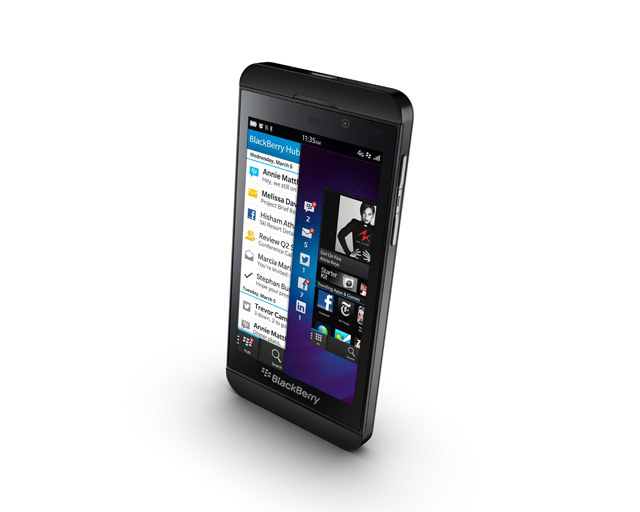
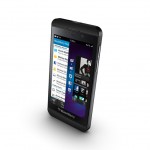
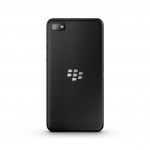
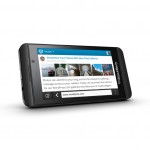
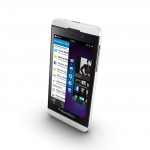

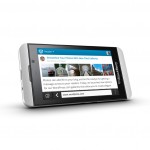
You’re right mate – I honestly believe their time is up, time to be swallowed by the Microsoft Juggernaut.
Its a sad day when you lose a major innovator in a market, this will just be another of those.
Nokia seems keen to innovate and get back to what it does best, RIM seem more placated to troddle out things that are too-little too-late. I’d love to see RIM hammer Apple from the sidelines, but I doubt it will happen.
I’m confident Microsoft’s WP8 / RT environment will continue to erode the business sector from everyone else EXCEPT Samsung with their Samsung Secure environment (borrowing plenty from Microsoft in Patents apparently). I’d be surprised if RIM could fit in its old boots, WP8 is screaming along with the Lumia 920. RIM is a lost cause IMO.
They should have just made an android phone. I doubt there will even be enough apps on blackberry to stop people switching to android or ios.
The only way I can see them surviving is if it’s cheap and can be rooted or something and have android installed on it.
Can be summed up thus: What are RIM doing that is different to any other smartphone maker? Answer nothing. What possible factors does RIM’s products have to ensure market differentiation/success? Answer nothing.
Sad death throes from a company that unfortunately doesn’t have anywhere to go.
I’m sure the Blackberry fans stuck with them because of the keyboard but now it’s gone, I think they may have made a very big mistake!
As we all know innovation follows trends and as trends go the new Z10 doesn’t really set a standard to follow but anyone who buys a Z10 will buy it because they love BlackBerry and not because they are trend setters. It’s a good phone with a smart look. More to follow I’m sure.
Comments are closed.